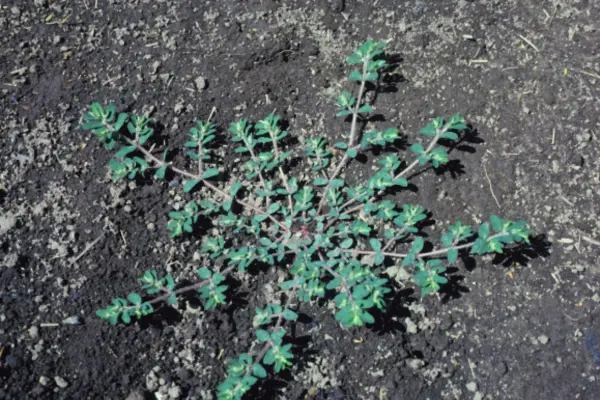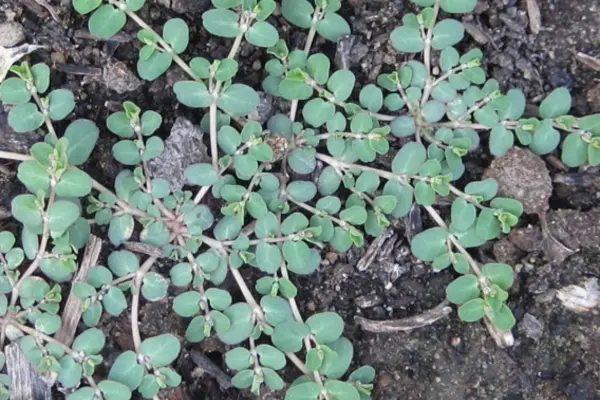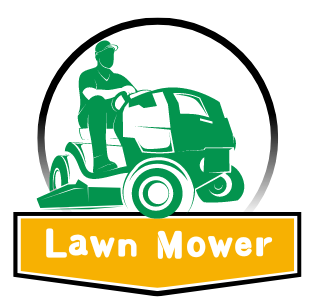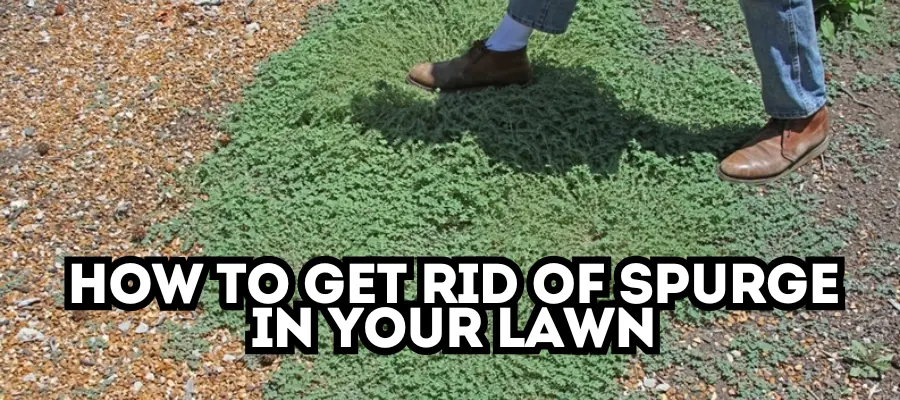Spurge is an invasive weed that can quickly take over your lawn if left unchecked. Known for its rapid spread, a single spurge plant can produce hundreds of seeds within a growing season.
Additionally, spurge is toxic to some grazing animals and pets, making it crucial to manage effectively.
In this guide, we’ll explore how to Get Rid of Spurge in Your Lawn, treat, and prevent spurge to maintain a healthy lawn.
How to Identify Spurge

Identifying spurge correctly is the first step in any pest control plan. Misidentification can lead to ineffective treatment methods, wasting both time and money.
Characteristics of Spurge
Growth Habit: Spurge typically grows in circular shapes or clumps, reaching diameters of 2 to 3 feet. Some varieties, like leafy spurge, can grow taller, up to 2 to 4 feet.
Plant Structure: As an herbaceous plant, spurge features soft, flexible stems. It grows from a taproot with multiple stems, and its leaves grow in pairs along the stems.
Flowers and Seed Pods: Flowers appear at the ends of stems and vary in color. These flowers produce seed pods that can release hundreds of seeds.
Irritating Sap: When damaged, spurge oozes a milky sap that can cause skin irritation.
Knowing these characteristics will help you differentiate spurge from other weeds.
How to Inspect for Spurge
Once you’ve identified what spurge looks like, the next step is inspection.
Best Practices for Inspection
Timing: Spurge typically thrives in warm weather, becoming active from February to September.
Areas of Concern: Look for spurge in areas where grass is thin, soil is compacted, or the lawn is under stress.
Signs to Look For: Watch for discoloration in the turf and take note of any spurge you find.
Documentation
Keep a record of spurge locations on your property to track infestations over time. This will help in planning treatment and prevention strategies.
How to Treat for Spurge

After identifying and inspecting for spurge, it’s time for treatment.
Pre-Emergent Herbicides
Pre-emergent herbicides are your first line of defense against spurge seeds.
Recommended Product: Barricade is effective in preventing spurge seeds from germinating.
Application Timing: Apply when soil temperatures reach around 55°F, typically late winter to mid-spring.
Application Method: Use a broadcast push spreader, applying half the granules in one direction and the other half perpendicular for even coverage. Water the area afterward.
Post-Emergent Herbicides
If spurge has already sprouted, use post-emergent herbicides.
Recommended Product: Fahrenheit selectively targets spurge without harming your grass.
Application Guidelines: Spot treat with a handheld sprayer. Mix according to label instructions and spray on calm days to minimize drift.
Manual Removal
For smaller infestations, manual removal can be effective.
How to Pull Spurge:
Wear gloves to protect against the irritating sap.
Use a trowel to loosen the soil around the base and pull straight up, ensuring you remove the entire taproot.
Safety Precautions
Wear PPE: Use gloves and goggles during herbicide application.
Keep Pets and People Away: Ensure no one enters treated areas until the product is dry.
How to Prevent Spurge
Preventing spurge is key to maintaining a healthy lawn.
Lawn Maintenance Practices
Mow Properly: Keep grass at a height of 3 to 4 inches to encourage strong root growth.
Aerate Your Lawn: Raking and dethatching improve soil aeration and water retention.
Watering: Provide 1 to 1.5 inches of water per week, ideally in the morning.
Fertilization: Maintain proper nitrogen levels and use potassium-rich fertilizers.
Landscape Management
Trim Trees: This reduces shade, allowing grass to grow more robustly.
Monitor Soil Health: Regular soil tests help maintain nutrient-rich conditions.
Conclusion
Effectively getting rid of spurge in your lawn involves a combination of identification, treatment, and preventive strategies. By recognizing the characteristics of spurge and implementing the right treatments, you can protect your lawn from this invasive weed.
Maintaining a healthy lawn is your best defense against spurge. For effective herbicides and further tips on lawn care, check local garden centers or specialized websites dedicated to pest control.

